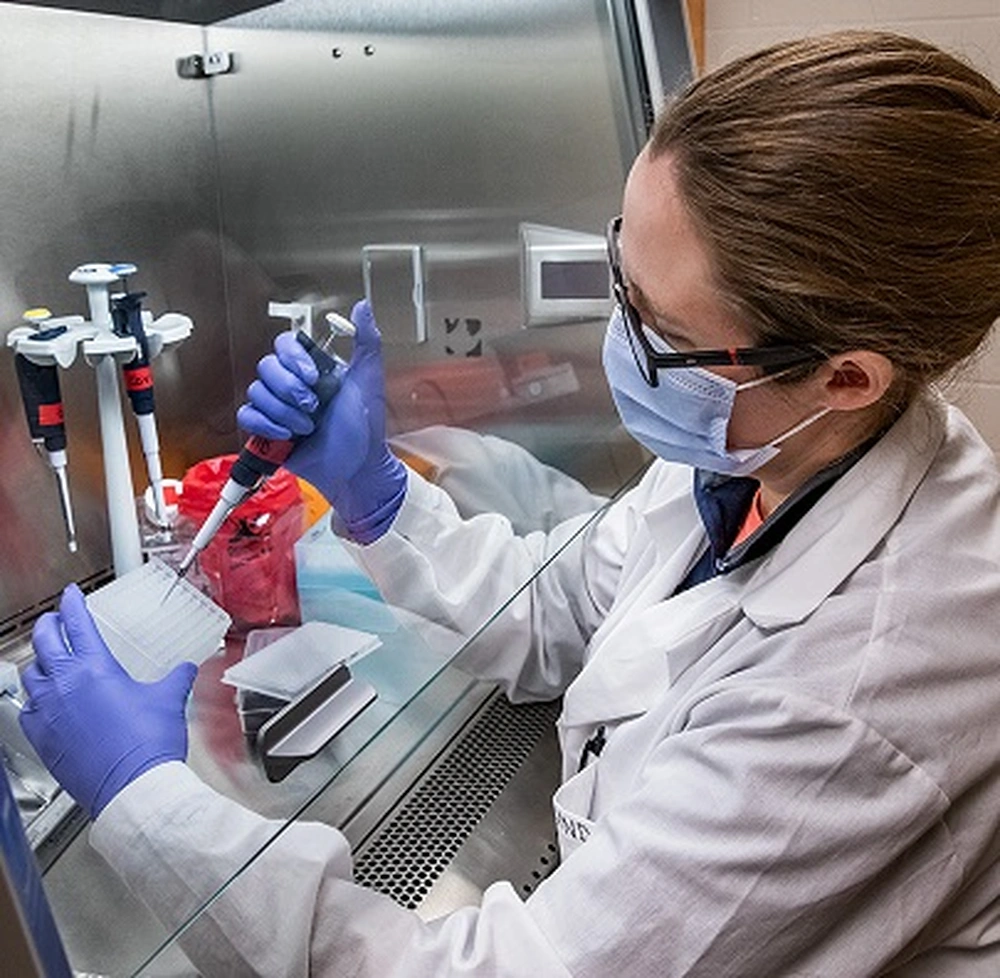
By Liz Ahlberg Touchstone, Illinois News Bureau
The University of Illinois, Urbana-Champaign is now performing its new rapid, saliva-based COVID-19 test on all students, faculty members and staff. The university validated its laboratory-developed test under CLIA by successfully comparing its performance to an FDA Emergency Use Authorized test.
“Direct saliva testing can address bottlenecks of time, cost and supplies. Our test also has unique features that enable fast and frequent testing on a large scale, and we are now working together with many partners to make our testing method broadly available as soon as possible,” said Dr. Martin Burke, May and Ving Lee Professor for Chemical Innovation and Professor of Chemistry, who helped to design the test. Burke also is the associate dean for research at the Carle Illinois College of Medicine and a medical doctor.
The Illinois protocol has one key element that makes it uniquely suited for large-scale adoption, said Paul Hergenrother, Kenneth L. Rinehart Jr. Endowed Chair in Natural Products Chemistry and Professor of Chemistry, who helped to develop the test.
“We inactivate the virus without opening any tubes. The samples are immediately inactivated at 95 C for 30 minutes. That makes it very safe for the workers in the diagnostic lab,” he said.
Illinois Gov. J.B. Pritzker said this puts the University of Illinois and the entire state of Illinois on the cutting edge of testing innovation on a national level.
"And let me just say to President Killeen, the State of Illinois looks forward to being your biggest customer,” Pritzker said. “If ongoing research continues to yield positive results, this has potentially game-changing implications for our statewide testing program as well as for testing on a national level. I’m so proud — but not at all surprised — to see this type of groundbreaking work come out of our own University of Illinois and I want to applaud President Killeen and the entire research and development team at University of Illinois for this achievement.”
“This pioneering technology is a game-changer that will help safeguard lives and livelihoods across the country,” said Tim Killeen, the president of the University of Illinois System. “It is one of many breakthroughs that the U. of I. System’s world-class researchers have contributed to the battle against COVID-19, a battle that we are proud to help lead.”
Unlike most coronavirus tests, which involve a long, invasive nasopharyngeal swab, the Illinois-developed saliva test, called I-COVID, asks those tested to drool a small amount into a sterile test tube. The I-COVID test yields results in hours, even at high testing volumes: The U of I has performed more than 50,000 tests since making walk-up testing available to faculty members, staff and students in July, and expects to test up to 20,000 people a day when the fall semester begins Aug. 24.
“Once somebody is infected, the amount of virus in their system can rise very rapidly. Unless we have a test that can give them results very quickly, by the time somebody finds out they are infected, they will have spread the virus,” said Rebecca Lee Smith, a professor of pathobiology at Illinois. “The faster we can notify people, the faster we can stop the spread.”
Testing is only one part of the strategy to contain the COVID-19 pandemic, the researchers note. The university has developed SHIELD, a three-pronged “target, test, tell” system that incorporates testing with data reporting, modeling and a smartphone app, working closely with the Champaign-Urbana Public Health District for contact tracing and isolation for individuals who test positive. The University of Illinois System recently announced the formation of SHIELD T3, aimed at making the testing and data technology broadly available.
“This is extremely exciting and important news for all of us in this pandemic,” said Robert J. Jones, the chancellor of the Urbana campus. “This is a critical new tool that we believe will let communities scale up their COVID-19 testing capabilities more rapidly in ways that are more affordable. We’re proud to be the university that is home to a huge team of amazingly dedicated and talented researchers who came together so quickly to move this test from concept to use approval in just a matter of months.”